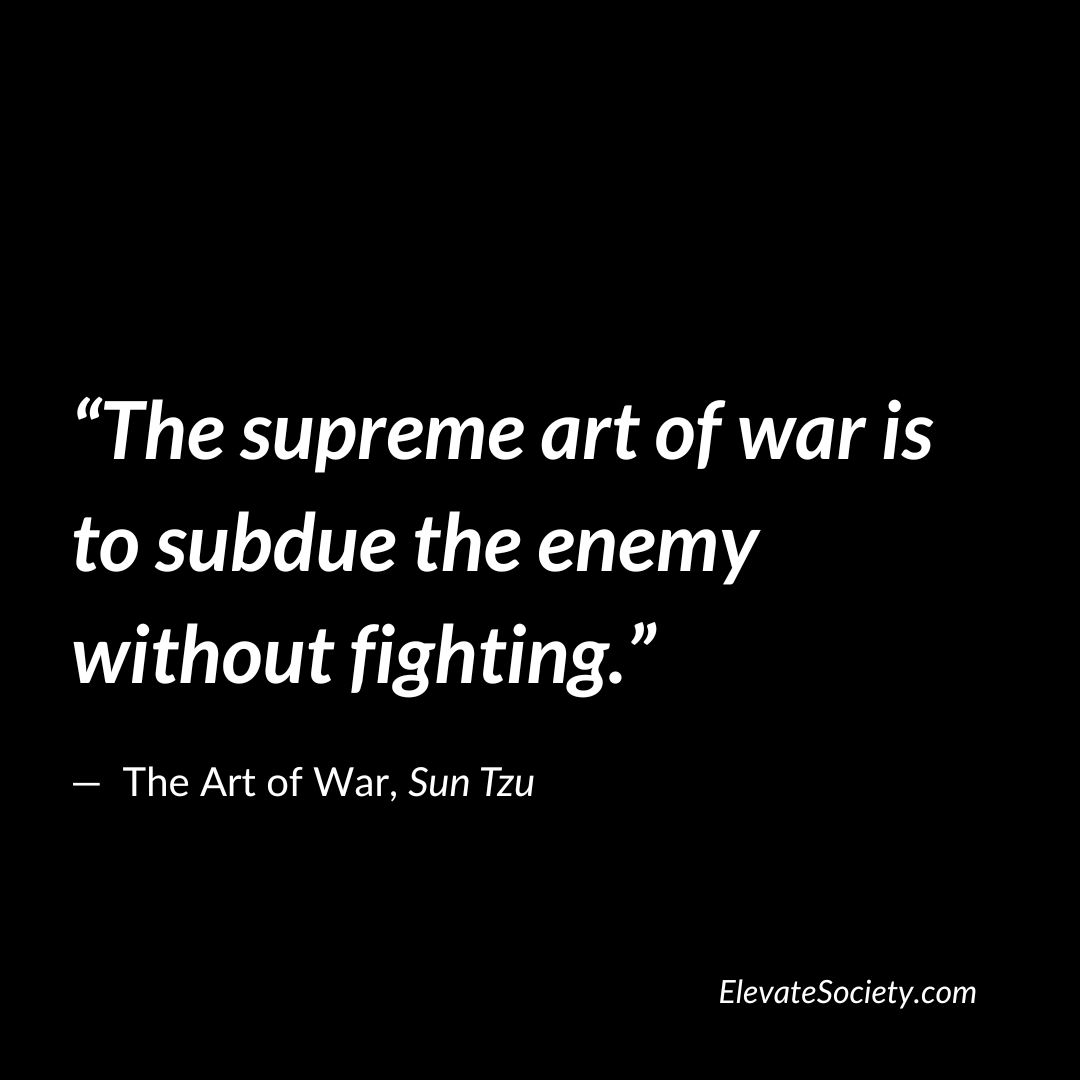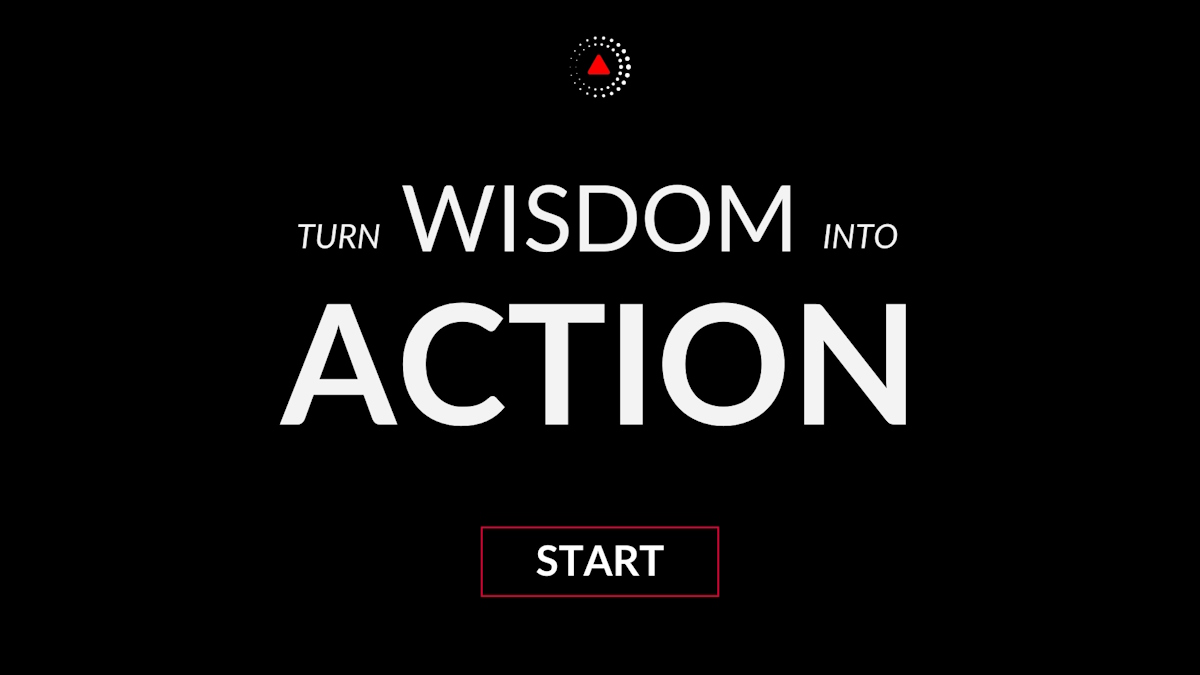The Art of War: Summary Review & Takeaways
This is a summary review of The Art of Ware containing key details about the book.
What is The Art of War About?
The Art of War is an ancient Chinese military treatise dating from the Late Spring and Autumn Period. The book contains a detailed explanation and analysis of the 5th-century BC Chinese military, from weapons and strategy to rank and discipline. Each chapter in the book is devoted to a different set of skills or art related to warfare and how it applies to military strategy and tactics. The Art of War has influenced both Far Eastern and Western military thinking, business tactics, legal strategy, and beyond.
Who is the Author of The Art of War?
Sun Tzu was a Chinese general, military strategist, writer, and philosopher who lived in the Eastern Zhou period of ancient China. Sun Tzu is traditionally credited as the author of The Art of War, an influential work of military strategy that has affected both Western and East Asian philosophy and military thinking.
What are key takeaways from The Art of War?
You don't become victorious by rushing into battle without planning, calculating, and comparing your army against your enemy's. There are 5 rules to follow that allow you to come out of war victorious.
Takeaway #1 Know When To Fight
Do not enter into fights you are not sure you can win, out of anger, or when your enemy has the advantage ie when you do not know the terrain, when your supply chain could become cut off, or simply when the enemy's army is in strong spirit. Instead, wait - secure your army against defeat and wait for the enemy to make a mistake, giving you the opportunity to enter the battle and be victorious.
Takeaway #2 Know How To Fight
Victory comes from quick, decisive battles rather than prolonged campaigns due to the amount of resources that long campaigns eat up both in terms of time and resources. Whenever possible, employ well-rewarded spies, conserve as many resources as possible by foraging or taking them from your enemy, and avoid besieging walled cities. Remember, it costs less to capture an enemy's country/city/army intact and that a skilled general will subdue his enemy without any fighting.
Takeaway #3 Master the Art of Deception
Confuse your enemy and lull them into a false sense of security by making them think that you're weak when you're strong, that you're timid instead of tough, disordered rather than disciplined, and further away than they think – The art of war is based on deception. Play games of cat and mouse as you consider your enemy's temperament and plan – If they have endless supplies, cut them off. If they are encamped, force them to move. If your enemy's general is rash when angered, be sure to rile him up. Always keep the enemy guessing, never sure from which direction you will attack, how, or with how many men.
Takeaway #4 Know When To Adapt and Disobey
Even the best-laid plans must be adapted when you're out in the field whether due to the terrain or the enemy. Know when to speed up your attack and when to wait - If the enemy's soldiers lean on their spears when standing, they are starving so weak – Now could be a good time to attack. On the other hand, when the enemy's troops start eating their cattle and neglect their camp, they are willing to fight until death – consider waiting.
Takeaway #5 Keep Command
A sovereign can impede an army not only by superseding the general and commanding the army to retreat or advance but also by placing officers in ill-suited roles. However, most of the success or failure falls on a general's head as it's up to him to ensure that his army is organised. A good general will keep his plans close to his chest and divide a large army into more manageable numbers using drums or banners to control each group so that they move as one. Soldiers who are commanded with an iron authority so that they have lost all sense of fear yet still treated humanely, like beloved sons will become attached to their general and do anything to win, even fighting to the death.
Book details
- Print length: 273 Pages
- Audiobook: 1 hr and 7 mins
- Genre: Nonfiction, Philosophy, History, War, Business, Careers, Management, Leadership
The Art of War Chapters
The Art of War is divided into 13 chapters
Chapter I: Laying Plans - Explores the five fundamental factors (the Way, seasons, terrain, leadership, and management) and seven elements that determine the outcomes of military engagements. By thinking, assessing, and comparing these points, a commander can calculate his chances of victory. Habitual deviation from these calculations will ensure failure via improper action. The text stresses that war is a very grave matter for the state and must not be commenced without due consideration.
Chapter II: Waging War - Explains how to understand the economy of warfare and how success requires winning decisive engagements quickly. This section advises that successful military campaigns require limiting the cost of competition and conflict.
Chapter III: Attack by Stratagem - Defines the source of strength as unity, not size, and discusses the five factors that are needed to succeed in any war. In order of importance, these critical factors are Attack, Strategy, Alliances, Army, and Cities.
Chapter IV: Tactical Dispositions - Explains the importance of defending existing positions until a commander is capable of advancing from those positions in safety. It teaches commanders the importance of recognizing strategic opportunities and teaches not to create opportunities for the enemy.
Chapter V: Use of Energy - Explains the use of creativity and timing in building an army's momentum.
Chapter VI: Weak Points and Strong - Explains how an army's opportunities come from the openings in the environment caused by the relative weakness of the enemy and how to respond to changes in the fluid battlefield over a given area.
Chapter VII: Maneuvering an Army - Explains the dangers of direct conflict and how to win those confrontations when they are forced upon the commander.
Chapter VIII: Variation of Tactics - Focuses on the need for flexibility in an army's responses. It explains how to respond to shifting circumstances successfully.
Chapter IX: The Army on the March - Describes the different situations in which an army finds itself as it moves through new enemy territories, and how to respond to these situations. Much of this section focuses on evaluating the intentions of others.
Chapter X: Classification of Terrain - Looks at the three general areas of resistance (distance, dangers, and barriers) and the six types of ground positions that arise from them. Each of these six field positions offers certain advantages and disadvantages.
Chapter XI: The Nine Situations - Describes the nine common situations (or stages) in a campaign, from scattering to deadly, and the specific focus that a commander will need in order to successfully navigate them.
Chapter XII: Attack by Fire - Explains the general use of weapons and the specific use of the environment as a weapon. This section examines the five targets for attack, the five types of environmental attack, and the appropriate responses to such attacks.
Chapter XIII: Use of Spies - Focuses on the importance of developing good information sources, and specifies the five types of intelligence sources and how to best manage each of them.
What are good quotes from The Art of War?
 [Favorite Quote]: “The supreme art of war is to subdue the enemy without fighting.” (Meaning)
[Favorite Quote]: “The supreme art of war is to subdue the enemy without fighting.” (Meaning)
"Appear weak when you are strong, and strong when you are weak"
― Tzu Sun, The Art of War Quotes
What are some of the main summary points from the book?
Here are some key summary points from the book:
- Importance of Strategic Planning: Sun Tzu emphasizes the significance of thorough strategic planning before engaging in any conflict. He highlights the importance of understanding one's own strengths and weaknesses, as well as those of the enemy, to maximize the chances of victory.
- Know Your Enemy: Sun Tzu stresses the importance of intelligence gathering and understanding the enemy's intentions, capabilities, and vulnerabilities. By knowing your enemy, you can anticipate their moves, exploit their weaknesses, and devise effective strategies.
- The Importance of Adaptability: Sun Tzu emphasizes the need for flexibility and adaptability in warfare. He advises that one must be able to adjust their strategies and tactics according to the changing circumstances of the battlefield.
- The Value of Deception: Deception is a recurring theme in "The Art of War." Sun Tzu emphasizes the use of strategic deception to mislead and confuse the enemy, creating advantageous situations and exploiting their vulnerabilities.
- The Role of Leadership: Sun Tzu places great importance on the role of leadership in determining the outcome of a conflict. A good leader must inspire confidence, provide clear guidance, and make wise decisions, while also taking care of the welfare of their troops.
- The Use of Terrain: Sun Tzu emphasizes the importance of understanding and utilizing the terrain to gain an advantage. He advises commanders to choose battlegrounds that favor their own forces and to exploit natural obstacles and features to impede the enemy.
- The Importance of Speed and Timing: Sun Tzu stresses the value of speed and timing in warfare. Quick and decisive actions can catch the enemy off guard and prevent them from organizing an effective defense.
- The Avoidance of Protracted Warfare: Sun Tzu argues that prolonged conflicts are costly and should be avoided whenever possible. He suggests seeking alternatives such as diplomatic solutions or targeting the enemy's strategy and resources to achieve victory without engaging in lengthy battles.
What do critics say?
Here's what one of the prominent reviewers had to say about the book: "A tour de force. Sawyer puts this most famous of the classic Chinese military writings into context and shows that Sun-tzu was not just a solitary genius, but the product of a remarkably rich martial culture." — Robert L. O'Connell, author of Fierce Patriot
* The summary points above have been concluded from the book and other public sources. The editor of this summary review made every effort to maintain information accuracy, including any published quotes, chapters, or takeaways
Chief Editor
 Tal Gur is an author, founder, and impact-driven entrepreneur at heart. After trading his daily grind for a life of his own daring design, he spent a decade pursuing 100 major life goals around the globe. His journey and most recent book, The Art of Fully Living, has led him to found Elevate Society.
Tal Gur is an author, founder, and impact-driven entrepreneur at heart. After trading his daily grind for a life of his own daring design, he spent a decade pursuing 100 major life goals around the globe. His journey and most recent book, The Art of Fully Living, has led him to found Elevate Society.


















